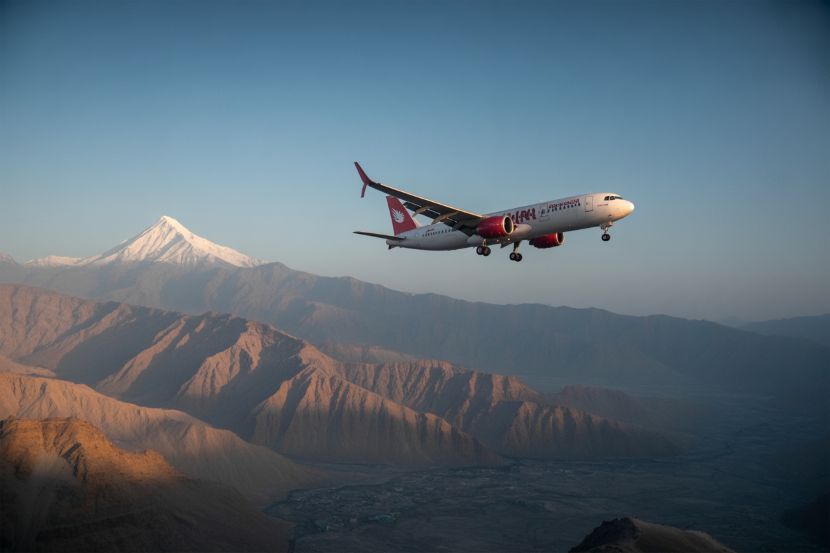Home » Oman Travel News » Restoring Air Travel Between Nepal and Oman: A Step Towards Easing Travel for Migrants and Enhancing Bilateral Relations, All That You Need to Know
Published on
October 19, 2025
Direct air travel between Nepal and Oman has been suspended for several years, leaving Nepali migrant workers and businesses in Oman facing travel inconveniences. Many Nepalis in Oman rely on air connectivity to visit home or conduct business, and the lack of direct flights has caused significant disruptions. The air link suspension, which began during the COVID-19 pandemic, has led to long wait times and complicated transit processes for travelers. Despite this, efforts are underway to bring back direct flights, which could improve migration processes, tourism, and economic exchanges between Kathmandu and Muscat.
Growing Need for Direct Air Connectivity
Approximately 30,000 Nepalis are currently living in Oman, a member of the Gulf Cooperation Council (GCC), with many working in the domestic sector, healthcare, hospitality, and engineering. The demand for direct flights between the two countries is high, as travel disruptions caused by long layovers in places like Sharjah have become an everyday challenge for migrant workers. Many of them have voiced frustrations over the delays and extended travel times.
The suspension of services by airlines like Oman Air and Salam Air—which had previously operated direct flights between Kathmandu and Muscat—is still affecting travelers. The airlines halted the routes due to lower demand during the pandemic and ongoing operational difficulties, especially related to reduced traffic to Europe and North America from Nepal via Oman.
Air Connectivity Impact on Business and Tourism
The absence of direct flights has not only inconvenienced Nepali workers but also harmed trade and tourism between the two nations. Business owners and travelers have increasingly found themselves frustrated by the lack of direct links, which significantly hampers the efficiency of their travels. Moreover, tourism has suffered as well, with fewer people from Nepal traveling to Oman and vice versa for leisure due to the extra effort and cost involved in transiting through other cities.
The issue is being actively addressed. The Nepali Embassy in Oman has held several discussions with the airlines involved, urging them to reconsider reintroducing the service. The embassy has also noted that while there are no concrete dates yet, Salam Air has indicated that it intends to restart flights in the coming year. This is seen as a positive sign that the situation might improve for those relying on air travel for personal or business reasons.
Economic and Social Implications
Oman has been a significant destination for Nepali workers, with large numbers migrating annually in search of better employment opportunities. Despite the Nepali government’s restrictions on issuing domestic worker visas to Oman, many still manage to secure jobs in various sectors. The social fabric between the two countries has strengthened over the years, with various community organizations providing support to workers in Oman.
With the bilateral agreement between Nepal and Oman on labor cooperation nearing completion, both countries are looking at ways to improve migration processes and make it easier for workers to travel. The Memorandum of Understanding (MoU), expected to be signed soon, will regulate labor migration and is expected to enhance the relationship between the two nations.
Restoring Air Links: A Path to Stronger Bilateral Relations
For residents like Bal Krishna Pariyar, who has lived in Oman for years, the absence of direct flights means long waiting hours during transits, often in Sharjah. A direct flight from Muscat to Kathmandu would take only about four to five hours, cutting down travel time significantly and reducing the stress of long layovers. Such a resumption would offer immense relief to thousands of Nepali families who regularly travel for personal or professional purposes.
Nepali travel and tourism businesses are also advocating for the resumption of flights to boost tourism between the two countries. A restored direct air link would not only reduce travel time but also enhance bilateral tourism exchanges. Oman, with its rich history, scenic landscapes, and cultural landmarks, is a popular destination for Nepali tourists, and vice versa. By simplifying air travel, both Nepal and Oman stand to benefit from a growing tourist exchange, which would support local economies.
What Should Travelers Know?
For travelers planning to visit Oman or Nepal, it is essential to be aware of the current state of air connectivity. Until direct flights resume, consider planning well in advance and checking for alternate routes through other cities. Travelers should also take note of any special provisions for migrant workers traveling back to Nepal or Oman, especially in light of new labor agreements. Booking early and confirming flight details can help mitigate potential disruptions caused by layovers and flight changes.
Travel Tips:Plan Early: Given the uncertainty surrounding the resumption of direct flights, booking flights early through available routes is essential for ensuring smoother travel.Check for Updates: Stay informed about any announcements from Oman Air or Salam Air regarding flight resumes and any possible new routes.Explore Alternatives: If you’re facing long layovers, consider planning a stopover in Sharjah or other cities, as some airlines offer discounted stays during longer waits.Stay Informed on Travel Policies: With agreements in progress between Nepal and Oman, it’s important to stay updated on migration-related travel requirements that may affect workers or tourists.
